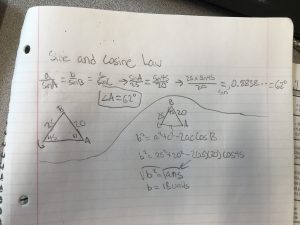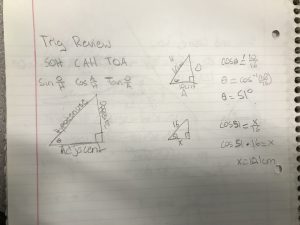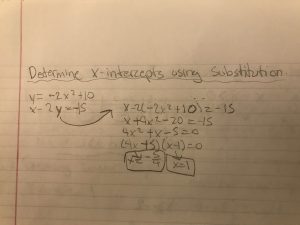
this week we learnt how to solve quadratic inequalities and how to test if the equation represented is true
above we have a standard quadratic equation but instead of being = to it is saying that the equation is greater than 0
so to test that we first have to find the x intercepts and from there we find a number lower than the lowest x intercept, a number in between the x intercepts, and a number greater than the greatest x intercept and we input them in the equation and see if the answer given is a positive or negative which will then tell us if the answer is greater or less than 0
we have now tested all three of the numbers we chose and it says that we have a positive, a negative, and another positive answer. We are looking for the positive answers to make this equation true.
after that you just state what is true which is….. X<-4 and x>2 making the equation true







